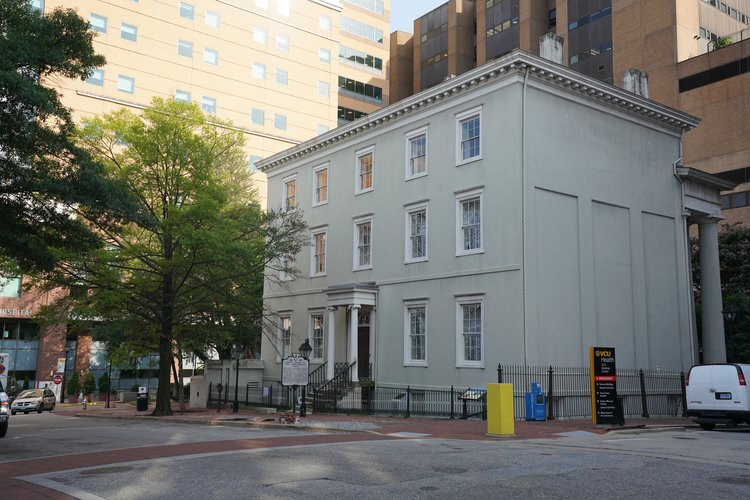Richmond, Virginia
Richmond is the capital city of the state of Virginia, one of the 13 original British colonies. This metropolis on the James river was also once the capital city of the Confederacy and vestiges of its time in this role remain intact today. The city also retains numerous federal-style buildings that date back to the late 1700s and early 1800s, including the governor's mansion.
Table of Contents
Virginia State Capitol Building.
Virginia State Capitol Building
Completed in 1800, this building is modeled on the Maison Carrée, an ancient Roman temple in Nimes, France.
Thomas Jefferson, a U.S. diplomat to France, the first U.S. Secretary of State, third U.S. President, and a Virginia resident was one of the designers of this building.
While stationed in France as a diplomat, Jefferson was enamored with a Roman temple in Nimes.
In a 1787 letter Jefferson wrote:
Here I am, Madam, gazing whole hours at the Maison Carrée, like a lover at his mistress.
Jefferson ultimately modeled the Virginia State Capitol Building after it.
Located in Richmond's Capitol Square, it sits mere feet away from the Virginia Governor's Mansion.
The building was the site of Aaron Burr's 1807 treason trail, presided over by Chief Justice John Marshall.
During the Civil War (1861-1865), this building was used as the meeting place of the Congress of the Confederacy.
Wickham-Valentine House.
Wickham-Valentine House
Also located in Richmond is the home of John Wickham, the attorney who defended Aaron Burr during his 1807 treason trail.
Over a dozen enslaved Africans also toiled here under the orders of the Wickham family.
Wickham-Valentine House.
The Virginia Governor's Mansion.
Governor's Mansion
Construction of this federal-style mansion was completed in 1813 and it has served as the official residence of the Governor of Virginia ever since.
It is located in Richmond's Capitol Square, just a few feet away from the Virginia State Capitol Building.
White House of the Confederacy.
White House of the Confederacy
White House of the Confederacy.
From 1861 to 1865, Richmond was the capital city of Confederate States of America.
During this period, the federal-style building pictured above was the executive residence of the Confederacy's only president, Jefferson Davis.
Davis fled the home and the city of Richmond on April 3, 1865, 6 days before Confederate General Robert E. Lee surrendered to Union General Ulysses S. Grant at Appomattox Court House, effectively ending the Civil War.
Dabbs House Museum.
Dabbs House Museum.
Dabbs House Museum
In the midst of the Civil War, Confederate General Robert E. Lee used this house as his field headquarters during the summer of 1862.
From this location, General Lee planned his defense of the city of Richmond from Union forces who sought to capture the Confederate capital city, reunify the country, and end the war.
The plan Lee conceived here resulted in the Seven Days' Battles, a series of battles from June 25, 1862 to July 1, 1862 that saw the Confederacy drive back the Union's attempt to capture Richmond.
Written By: Aiden Singh Published: July 19, 2020








